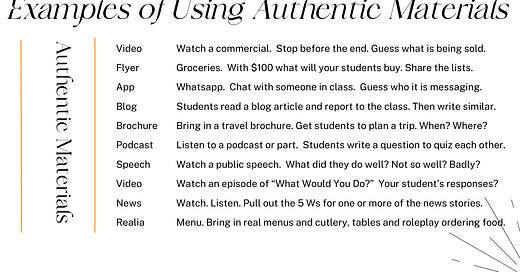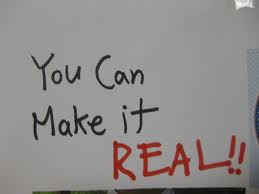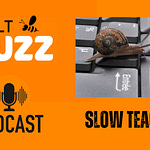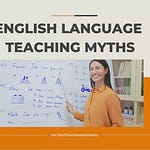Linkedin | Videos | Blog | Printables | ELT News | TpTs | Youtube Channel
Slowly through my own growth as a teacher, I’ve become enamored and enchanted by the use of authentic materials in the English language classroom.
An authentic material is … “any material which has not been specifically produced for the purpose of language teaching.” David Nunan (1998)
When you first begin as a teacher, you don’t see the real world as a material. Rather, you begin your foundation with a textbook and lowly, repetitive exercises of Sam and Sally talking about their phony lives and likes or dislikes. But gradually all teachers start trying to bring reality into their lessons, little by little.
There is just so much authentic material, easily adaptable too, that you can use. Not just videos but brochures, maps, realia, blueprints, magazines, emails, message conversations, podcasts, grocery fliers, online apps, poetry, journals, news articles and papers and I could go on and on forever.
[See our “50 Tasks For The English Language Classroom” - many ideas]
Yet, despite the richness and efficacy of authentic materials, there is very little use of authentic text, audio, video or teacher discourse in our field. Why I ask?
Research supports its primacy. Gut feeling and the success of millions of language learners learning English on their feet, in the real mire and ambiguity of the street tell us that we should be using the “real world” and authentic materials.
So why don’t we teachers use authentic materials? May I say, it might be we are fearful?
Yes, I think there is a deep fear within us teachers and in the ELT “industry” about authentic materials. Here are a few ways this fear I think manifests and causes us to eschew and not use or adapt authentic materials.
Teachers say: My students won’t understand it. It’s too difficult and demanding!!!
This is a teacher reflex. Teachers instinctually (and for good reason) fear a lesson where all students are bewildered. We’ve all experienced this in our classrooms. However, the richness of authentic materials should not be avoided for this reason.
Teachers need to learn how to support the materials with contextual aids, scaffolds, delivery techniques etc … so to facilitate the learning. And difficulty, “ambiguity” is precisely the point where learning starts. So, we need to challenge students and let them grow their ambiguity tolerance so to increase uptake.
Teachers say: The students prefer and want a book and publisher’s materials.
I’m not so sure they do. It’s kind of like the issue of the native-speaking teachers. When you look at it closely, students don’t prefer the coursebook or want a native speaking teacher – they just want good, competent, quality teaching. A teacher they trust and believe in. Lessons that count.
Teachers say: But that’s not teaching! You need to instruct. You need structure.
Too often teacher success is limited by a focus on explicit instruction and teaching about language rather than teaching “through language”. We need a more inductive approach when delivering our language lessons. One firm rule I have with any text, audio or visual material is let the students first “have a go”. Allow them to experience the whole thing, in all its complexity.
We teachers also need less focus on form and structure and more focus on meaning, negotiated meaning. That’s where authentic materials show their strength – allowing students to figure things out … not spoon feeding them. Let’s move beyond our synthetic syllabuses – learning is messy. Teaching too.
Of course, there is a place for educational materials. Especially at the lower levels. But beyond that, we need to let go and make authentic materials our primary teaching material.
Teachers say: I can’t find any good authentic materials. Besides, it’s so much hard work to use and prepare!!!
Again, I disagree. Now with the internet and growth of digital media, quality authentic materials abound. Just look at all the available commercials on YouTube for example.
The real problem is that teachers aren’t trained in the use of authentic materials and how to simply, easily use them in their lessons, as sources of learning. Teacher training programs spend hours on how to deliver lessons from worksheets or coursebooks but little time on materials development. Authentic materials need to be used in an open, students focused framework, not mined intensively. Further, teachers need to be provided a strong toolkit of authentic materials and lessons for their teaching “go to” toolkit.
Teachers say: My school has a set curriculum. I can’t use authentic materials except as a supplement and there truly isn’t any time for that.
In this moment of time when the pandemic made many look hard and long at digital language learning materials – we need to take the opportunity to promote authentic materials use. Truly.
This all starts with giving teachers more freedom to teach – as I call it. Trust teachers more to develop lessons and move away from the packaged, publisher language trash. Decrease the grammar, vocabulary and focus on form in our curriculums. Less focus on testing and more focus on the electric negotiation of meaning available and so powerfully inherent in authentic materials.
Let’s throw off the blanket of fear and bust out of our classroom’s 4 walls. Not just by using authentic materials but even making our teaching more authentic. Decrease teaching presence and make the teacher – student encounter more real, authentic.
Let’s keep it real, as real as possible, when teaching. Using authentic materials is a great starting point.
Resources:
See our presentation slides »>
Using Authentic Materials - Kilickaya, Middle East Technical University (Ankara, Turkey)
Authentic Materials Add Value - Heather Buchanan-Schrader
Why Use Authentic Materials? - Sanako Blog















Share this post